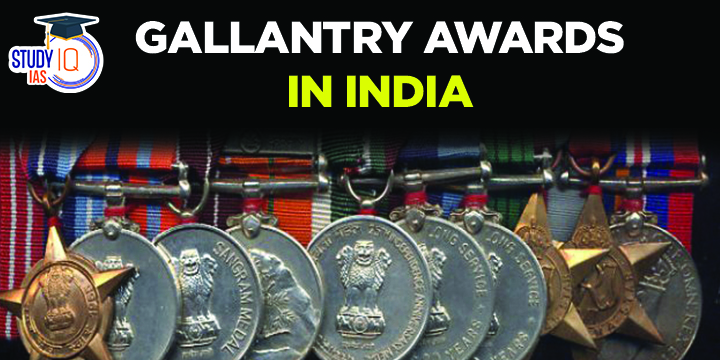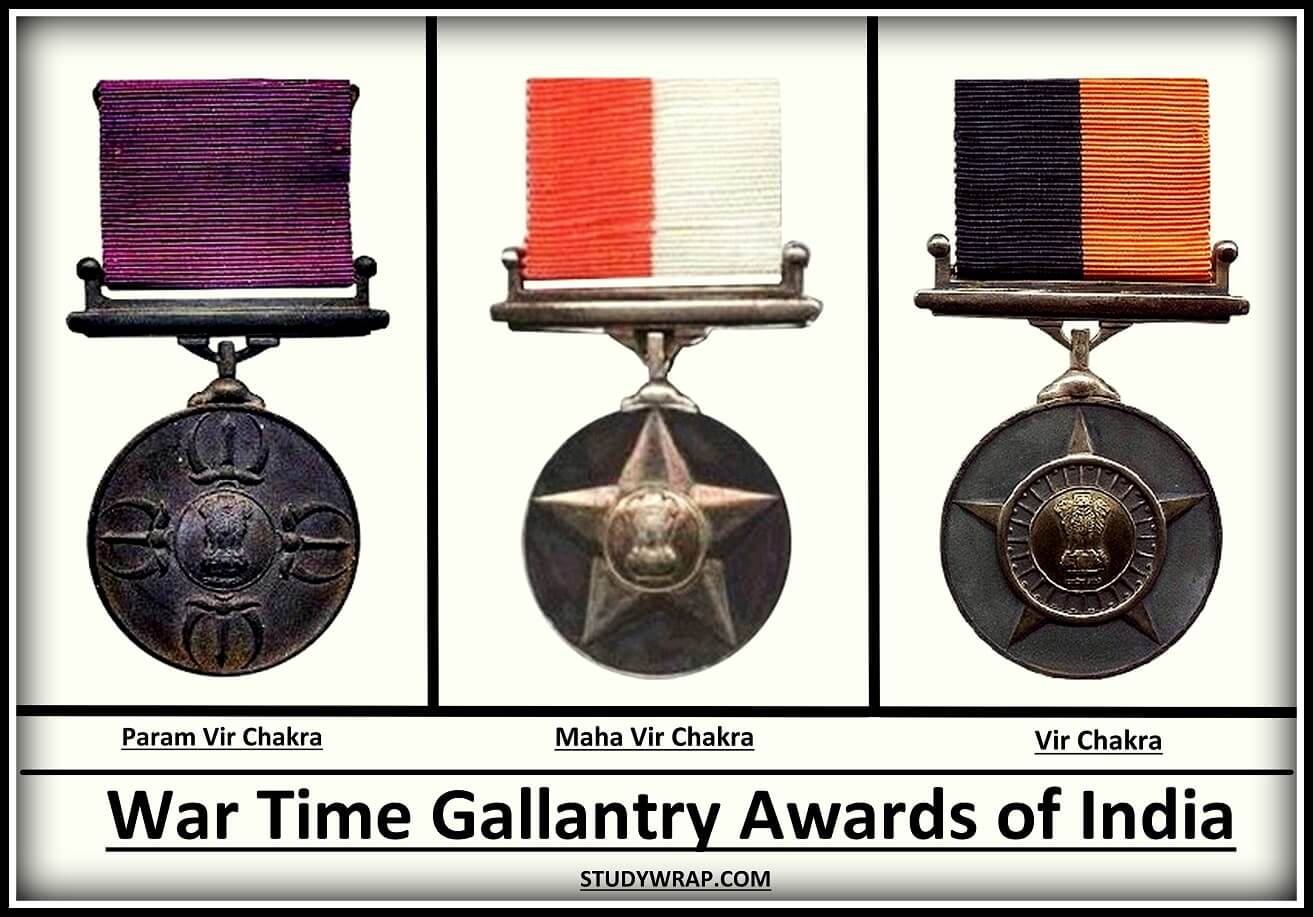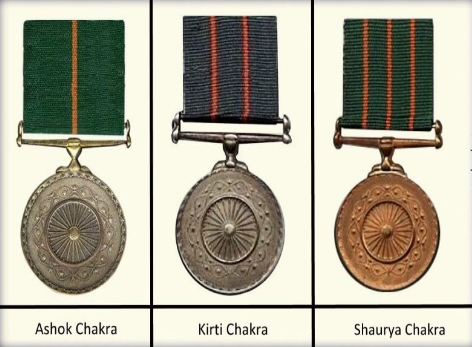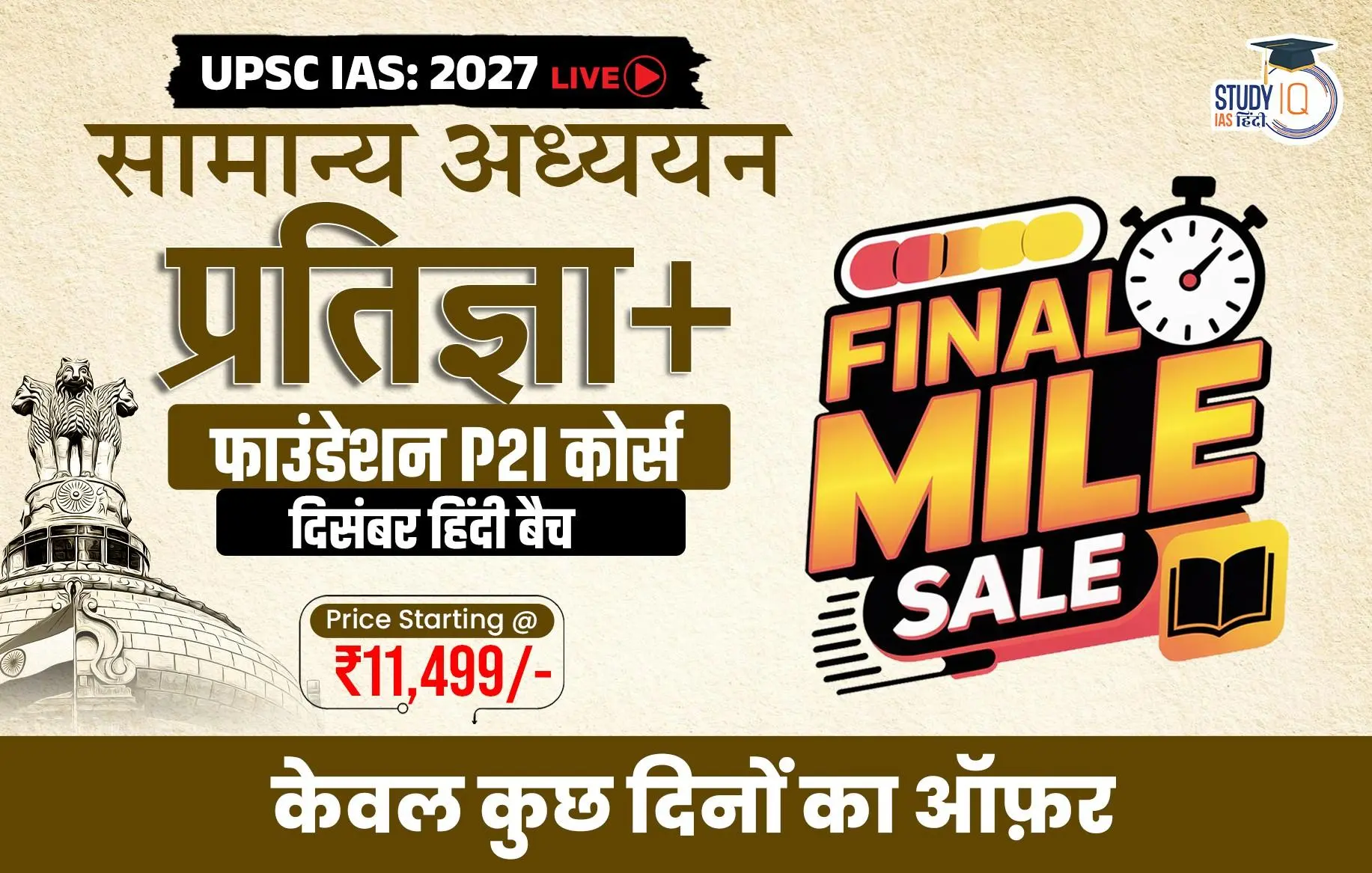Table of Contents
On the eve of the 79th Independence Day of India, the Ministry of Home Affairs has declared a total of 1,090 gallantry and service medals to personnel belonging to the Police, Fire Services, Home Guard, Civil Defence, and Correctional Services.
Gallantry Awards 2025 on 15th August
Ministry of Home Affairs has declared that 1,090 personnel from various services — police, fire services, Home Guard, Civil Defence, and Correctional Services — will be awarded Gallantry and Service Medals on this occasion.
Out of these awards:
- 233 are Gallantry Medals,
- 99 are President’s Medals for Distinguished Service,
- 758 are Medals for Meritorious Service.
The regional distribution brings into focus Jammu & Kashmir as the state with the largest number of recipients of the Gallantry Medal, narrowly followed by front-line units like the CRPF and BSF.
Interestingly, 16 BSF personnel have been uniquely awarded Gallantry Medals for their remarkable bravery during Operation Sindoor, an operation against terrorist and military threats in Pakistan and Pakistan-occupied Kashmir conducted this May.
Gallantry Awards in India
The Government of India established the Gallantry Awards to recognise the bravery and sacrifice of military officers, other legally organised forces, and citizens. The announcement of these medals for bravery occurs twice a year, first on Republic Day and later on Independence Day.
The government of India established the first three gallantry awards following independence on January 26, 1950, with the Param Vir Chakra, Maha Vir Chakra, and Vir Chakra being declared to have taken effect on August 15, 1947. The other three bravery medals, the Ashoka Chakra Class-I, Class-II, and Class-III, were subsequently established in 1952 and were believed to be effective as of August 15, 1947. In January 1967, the names of these prizes were changed to Ashoka Chakra, Kirti Chakra, and Shaurya Chakra, respectively.
| Category | Name of Gallantry Awards in India | Level | Awarded For |
| Wartime
|
Param Vir Chakra | Highest | Most conspicuous bravery or supreme sacrifice in the presence of the enemy. |
| Maha Vir Chakra | Second-highest | For acts of conspicuous gallantry in the presence of the enemy. | |
| Vir Chakra | Third-highest | Acts of gallantry on the battlefield | |
| Peacetime
|
Ashoka Chakra | Highest | Bravery away from the battlefield (e.g. terrorism, rescue ops) |
| Kirti Chakra | Second-highest | Courageous action in peacetime (e.g. counter-insurgency, internal ops) | |
| Shaurya Chakra | Third-highest | Bravery during peacetime situations such as rescue or security operations |
List of Gallantry Awards 2025 Conferred by President Murmu
President Droupadi Murmu conferred Kirti Chakras and Shaurya Chakras Gallantry Awards to the personnel of the Armed Forces, Central Armed Police Forces and State/Union Territory Police during Phase-I of the Defence Investiture Ceremony at Rashtrapati Bhawan.
President Murmu awarded six Kirti Chakras, of which four were posthumous, and 33 Shaurya Chakras, of which seven were posthumous, to the personnel of the Armed Forces, Central Armed Police Forces and State/Union Territory Police during Phase-I of the Defence Investiture Ceremony 2025 at Rashtrapati Bhawan, New Delhi on May 22, 2025. The personnel were awarded Gallantry awards for showing raw courage, unmatched bravery and complete disregard for personal safety in the line of duty.
Kirti Chakra
| List of Kirti Chakra Recipients 2025 | |
| Living |
|
| Posthumous |
|
Shaurya Chakra
| List of Shaurya Chakra Recipients 2025 | |
| Living |
|
| Posthumous |
|
Types of Gallantry Awards
Gallantry Awards for bravery are divided into two categories:
- Gallantry in the Face of the Enemy
- Gallantry Other than in the Face of the Enemy
First Category of Gallantry Awards:
- Param Vir Chakra (PVC)
- Mahavir Chakra (MVC)
- Vir Chakra
Second Category of Gallantry Awards:
- Ashok Chakra
- Kirti Chakra
- Shaurya Chakra
Param Vir Chakra
Medal: Circular, made of bronze, one and three-eighths inches in diameter, and embossed with four copies of “Indra’s Vajra” on the obverse and the state emblem in the middle. It will have “PARAM VIR CHAKRA” imprinted on the back in both Hindi and English, with two lotus flowers between the two inscriptions.
Ribbon: Plain purple colored ribbon.
Bar: If any Chakra recipient later commits an act of bravery that would have qualified them for the Chakra, that subsequent act of bravery will be noted by a Bar that will be attached to the riband that holds the Chakra. A Bar will be added for each subsequent act of bravery, and any such Bar or Bars may also be given posthumously. When worn alone, a miniature version of “Indra’s Vajra” will be added to the riband for each Bar received.
Mahavir Chakra
Medal: One and three-eighths inches in diameter, standard silver, circular in shape, with a five-pointed heraldic star etched on the obverse that touches the rim just slightly. A domed, gilded state emblem shall be in the centre of the star. The word “MAHA VIR CHAKRA” will be embossed on the back in both Hindi and English, with two lotus flowers between the two inscriptions.
Ribbon: The ribbon is of a half-white and half-orange color.
Bar: If any Chakra recipient later commits an act of bravery that would have qualified them for the Chakra, that subsequent act of bravery will be noted by a Bar that will be attached to the riband that holds the Chakra. A Bar will be added for each subsequent act of bravery, and any such Bar or Bars may also be given posthumously. When worn alone, the riband will have a small duplicate of the Chakra for each Bar received.
Vir Chakra
Medal: One and three-eighths inches in diameter, standard silver, circular in shape, with a five-pointed heraldic star etched on the obverse that touches the rim just slightly. A chakra and a domed centre piece carrying the gilded state emblem will be located within the star’s chakra at its centre. The word “VIR CHAKRA” will be engraved on the back in both Hindi and English, with two lotus blossoms between the two scripts.
Ribbon: The ribbon is coloured in equal parts blue and orange.
Bar: If any Chakra recipient later commits an act of bravery that would have qualified them for the Chakra, that subsequent act of bravery will be noted by a Bar that will be attached to the riband that holds the Chakra. A Bar will be added for each subsequent act of bravery, and any such Bar or Bars may also be given posthumously. When worn alone, the riband will have a small duplicate of the Chakra for each Bar received.
Ashoka Chakra
Medal: With rims on all sides, it is a circle with a diameter of one and three fourth inches. The medal must be made of gold leaf. The Ashoka’s Chakra replica will be etched on the medal’s obverse, and it will be encircled by a lotus wreath. Lotus leaves, flowers, and buds will be arranged in a design along the rim’s inner side. The words “Ashok Chakra” in both Hindi and English, separated by two lotus flowers, will be imprinted on the reverse of the medal.
Ribbon: A green ribbon with two parts of the same size and an orange vertical line separating them.
Bar: A Bar will be attached to the riband that suspends the Chakra in the event that the recipient of the Chakra later performs the same act of bravery that would have qualified them for the Chakra. For each additional act of bravery, an additional Bar will be added, and any such Bar or Bars may also be given posthumously. When worn alone, the riband will have a small duplicate of the Chakra for each Bar received.
Kirti Chakra
Medal: One and three-eighth inches in diameter, round in shape, made of ordinary silver, and having rims on both sides. The Ashoka’s Chakra replica will be etched on the medal’s obverse, and it will be encircled by a lotus wreath. Lotus leaves, flowers, and buds will be arranged in a design along the rim’s inner side. Both the Hindi and English translations of “KIRTI CHAKRA” will be imprinted on the reverse of the coin, with two lotus flowers separating the two languages.
Ribbon: Two orange vertical lines divide a green ribbon into three equal pieces.
Bar: A Bar will be attached to the riband by which the Chakra is suspended if the recipient of the Chakra again exhibits the kind of bravery that would have qualified them for the Chakra. For each additional act of bravery, an additional Bar will be added, and the Bar or Bars may also be given posthumously. When worn alone, each such Bar will have a small version of the Chakra placed on the riband.
Shaurya Chakra
Medal: One and three-eighth inches in diameter, round in shape, manufactured of bronze, with rims on both sides. The Ashoka Chakra replica will be etched on the medal’s obverse, and it will be encircled by a lotus wreath. Lotus leaves, flowers, and buds will be arranged in a design along the rim’s inner side. Both the Hindi and English translations of “SHAURYA CHAKRA” will be imprinted on the reverse of the coin, with two lotus flowers separating the two languages.
Ribbon: Green colour ribbon divided into four equal parts by three vertical lines.
Bar: A Bar will be attached to the riband by which the Chakra is suspended if the recipient of the Chakra again exhibits the kind of bravery that would have qualified them for the Chakra. For each additional act of bravery, an additional Bar will be added, and the Bar or Bars may also be given posthumously. When worn alone, each such Bar will have a small version of the Chakra placed on the riband.
| Facts related to Gallantry Awards in India |
|
Eligibility Criteria for Gallantry Awards in India
The Param Vir Chakra, the Maha Vir Chakra & the Vir Chakra
To qualify for the Param Vir Chakra, Maha Vir Chakra, and Vir Chakra, a person must fall into one of the following categories:
- Officers and members of all ranks of the Territorial Army, Militia, Naval, Military, and Air Forces, as well as any Reserve Forces and other Armed Forces that are duly established.
- Civilians of either sex working regularly or temporarily for any of the aforementioned Forces, including Matrons, Sisters, Nurses, and the Staff of the Nursing Services and Other Services Relating to Hospitals and Nursing.
Conditions of Eligibility
- Whether on land, at sea, or in the air, the enemy must be present for the Param Vir Chakra to be given out for the most outstanding courage or some daring or noteworthy act of valour or self-sacrifice.
- Whether on land, at sea, or in the air, acts of conspicuous bravery in the presence of the adversary qualify for the Maha Vir Chakra.
- The Vir Chakra is awarded for deeds of gallantry in the presence of the enemy, whether on land or at sea or in the air.
The Ashoka Chakra, The Kirti Chakra & Shaurya Chakra
People who fall into the following categories are eligible for the Ashoka Chakra, Kirti Chakra, and Shaurya Chakra:
- Officers, members of all ranks of the Army, Navy, and Air Force, members of any Reserve Force, members of the Territorial Army, members of the Militia, and members of any other legally established forces.
- Civilians of either sex from all walks of life, including Central Para-Military Forces and Railway Protection Force members;
- Members of the Nursing Services of the Armed Forces;.
Conditions of Eligibility
- Other than in the face of an enemy, the Ashoka Chakra is given for the most egregious courage, some act of daring, the greatest act of valour, or self-sacrifice.
- The Kirti Chakra is given for eminent bravery that is not displayed in the presence of an opponent.
- The Shaurya Chakra is given for bravery displayed away from an enemy.
Param Vir Chakra: Highest Gallantry Award in India
The highest military honour, the Param Vir Chakra, is given to individuals who have displayed exceptional bravery during a time of conflict.
The “Wheel of the Ultimate Brave” is another name for the prize. The medal is a bronze disc in a circle. The National Emblem of India is displayed on the front in the centre of a raised circle that is surrounded by four sets of the vajra. Two inscribed legends are separated by lotus flowers on the reverse of the coin. Both Hindi and English versions of the word “Param Vir Chakra” are present.
| UPSC PYQ 2021 |
Q.1) Consider the following statements in respect of Bharat Ratna and Padma Awards:
Which of the above statements are not correct?
Answer: D |
| Other Important Awards | |
| Padma Awards 2025 Winners List | Major Dhyan Chand Khel Ratna Award Winners List |
| Jnanpith Award 2025 Winners List | IIFA Awards 2025 Winners List |




 Miss Universe Winners List From 1952 to ...
Miss Universe Winners List From 1952 to ...
 Significance and History of Diwali Festi...
Significance and History of Diwali Festi...
 Asia Cup Winners List (1984–2025): Ind...
Asia Cup Winners List (1984–2025): Ind...

























